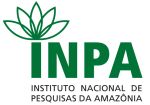Eventos

LINK: https://www.youtube.com/live/qpWeWABn4Xg?feature=share
ABSTRACT: The present work is a systematic review of the most diverse diaptomid copepods from South America, Notodiaptomus Kiefer 1936. We proposed to review and identify new morphological characteristics for 37 currently accepted species, evaluate their nomenclatural status and examine their evolutionary relationships. To carry out the review, 2,700 morphological characters were collected for males and females, encoded in the DELTA format (DEscription Language for Taxonomy). These characters were used for the production of descriptions of each species, construction of identification keys and also for a historical evaluation of the genus and the production of the first phylogenetic analysis based on parsimony ever performed for Notodiaptomus. We present the synonymy of all species, status of the type material, updated records of occurrences, taxonomic observations and dichotomous and interactive keys for males and females. Phylogenetic analysis of the morphological characters of Notodiaptomus supports the original relationship hypotheses, but does not support all currently accepted species as monophyletic groups. Even so, we have for the first time defined a set of clear and objective morphological characteristics for the recognition of Notodiaptomus. The common and exclusive ancestor based on 80 synapomorphic characters corroborates the monophyly of the considered species and subsidizes the discussion of the exclusive conditions and historically indicated taxonomic relationships. The features of the fourth and fifth segments of the metasosome of males and females, oral appendages and antenna represent new evolutionary notions for the genus, as well as for Neotropical diaptomids. Despite this, the high complexity of the present relationships is supported by the distribution of various attributes in many evolutionary directions. Thus, for the first time, a set of clear and objective morphological characteristics, supported by our phylogenetic analysis, is proposed for the recognition of the genus. With this, we intend to help establish a step further in the consistency of the taxonomy of these species, contributing to answer important questions about the evolutionary origin of some of the characteristics presented.


